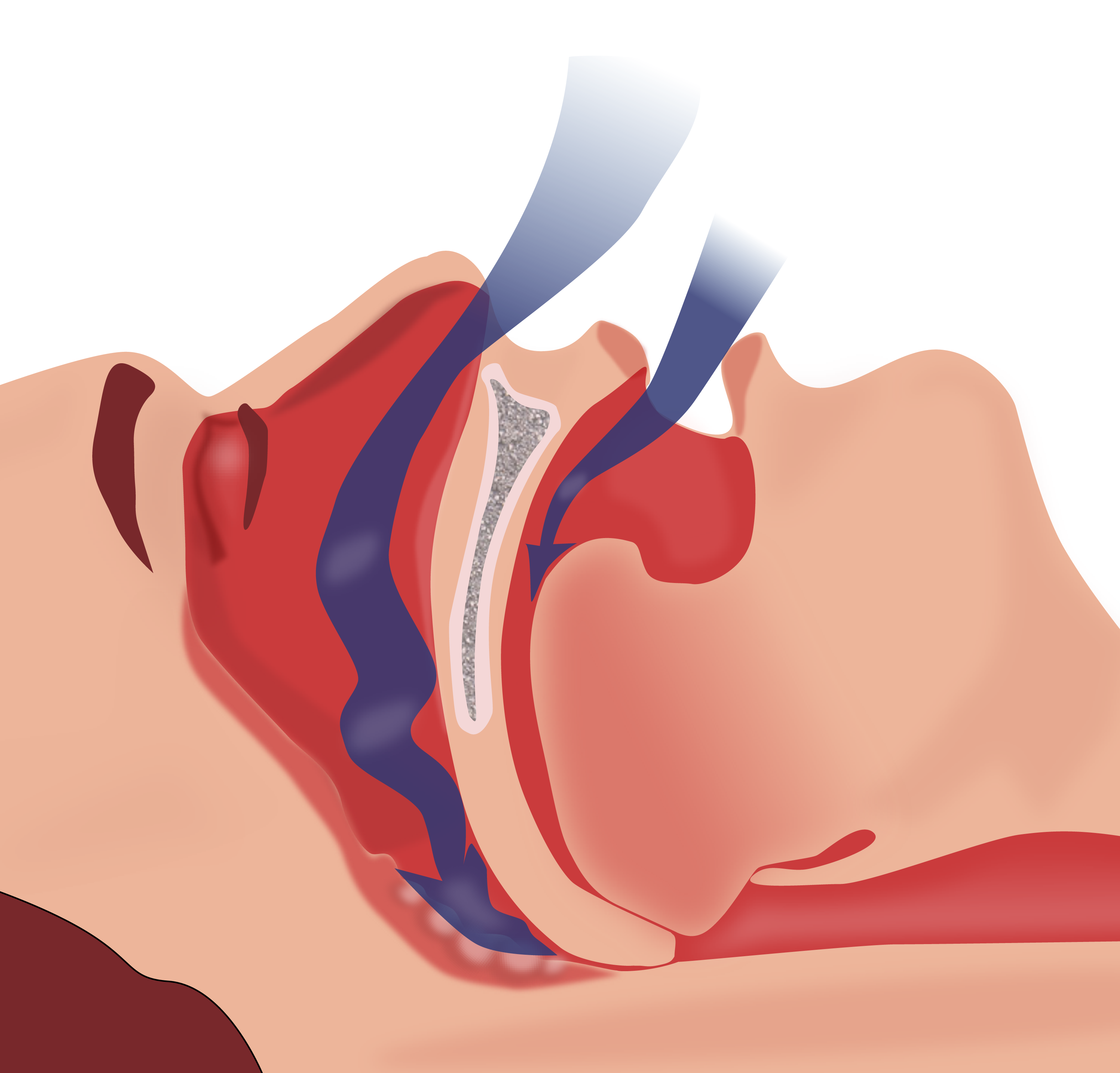Playlist
Show Playlist
Hide Playlist
Obstructive Sleep Apnea: Treatment
-
Slides SpecificDiseases RespiratoryPathology V2.pdf
-
Reference List Pathology.pdf
-
Download Lecture Overview
00:01 Treatment, we talked about the weight loss and every once in a while ENT surgery is a symptom that you wanna keep in mind but understand for the most part really has not have good evidence so you're sticking with weight loss as being the big thing. 00:14 CPAP is definitely a treatment of choice. 00:17 What does that mean? Continued positive airway pressure, right? So you're literally going to introduce positive pressure so you can keep your airways open, so you’re not snoring, you don’t result in hypoxemia. 00:31 And we have tracheostomy to bypass the obstruction in extreme type of solutions, so if there's anything there that you want to keep in mind it’ll be tracheostomy. 00:43 The comorbidities are big for you so during sleep we talked about how, if there’s hypoxemia, going to result in vasoconstriction from hypertension eventually may result in systemic hypertension which is not a good thing. 00:55 Arrhythmias is definitely something that you're worried about and therefore sudden cardiac death and CHF if your patient, comorbidity, let’s say that there’s aortic stenosis and that results in diastolic dysfunctions - I need you to be with me now, I can walk through that quickly because I’m open that your cardiology is strong. 01:16 We’ve talked about diastolic/systolic dysfunction and especially with diastolic dysfunction, it’s a comorbidity affected by sleep apnea, a daytime somnolence leading to automobile accidents, for obvious reasons, poor cognitive performance. 01:31 Okay, now, what about this obesity hyperventilation syndrome? This one’s really, really dangerous wasn’t it? Meaning to say that you’re patient was not able to properly have ventilation. 01:41 Carbon dioxide - remember, think of it as being an obese individual crushing, not crushing I'm being dramatic but it's causing compromise of thoracic cage. 01:51 Certain obese individuals chronic hyperventilation uncertain etiology, but obesity is huge. 01:57 Pulmonary hypertension, right-sided heart failure can treat with BIPAP and that’s huge here. 02:03 What do you mean? So what's the difference between CPAP and BIPAP? If there’s obstructive sleep apnea it doesn’t necessarily mean that your patient is suffering from retention of carbon dioxide, correct? So obstructive sleep apnea, you can get in there and you’re able to then noninvasively introduce continued positive airway pressure, that’s CPAP. 02:26 In obesity hyperventilation syndrome, what’s my problem - hypoventilation. 02:32 Drop your breathing rate, I kinda do too much right now but if you do it then you're gonna retain carbon dioxide. Imagine that occurring chronically. 02:42 what might you wanna do so that you can then blow off the carbon dioxide? Not only help with inspiration, also help with expiration so this is called bi-level positive airway pressure, BIPAP. 02:56 Extremely comfortable drug - excuse me, the treatment of choice especially if you are holding on retaining the carbon dioxide, keep that in mind. 03:05 Often referred to as being what's known as Pickwickian, after a character in - well, this is your obesity hypoventilation syndrome, if you wanna know where it comes from, there you go. 03:16 It’s kinda neat actually but you might know this is being as Pickwickian, you might see such a thing, just keep that in mind. 03:22 Obesity hypoventilation syndrome, before you end your lecture and discussion here, you wanna be very clear about the definition of sleep apnea to be able to identify some of those characteristics that I showed you on polysomnography, and be able to differentiate obesity hypoventilation syndrome from your obstructive sleep apnea.
About the Lecture
The lecture Obstructive Sleep Apnea: Treatment by Carlo Raj, MD is from the course Disorders of the Pulmonary Circulation and the Respiratory Regulation: Basic Principles with Carlo Raj.
Included Quiz Questions
What is the first-line management option for obstructive sleep apnea?
- Weight loss
- Tracheostomy
- ENT surgery
- BiPAP
What is the biggest challenge in the management of obstructive sleep apnea with CPAP therapy?
- Patient Compliance
- Risk for barotrauma
- Mucosal irritation
- Device maintenance
What is the main issue in obesity hypoventilation syndrome that differentiates it from obstructive sleep apnea?
- Hypercapnia
- Hypoxemia
- Daytime somnolence
- Snoring
- Hypertension
If weight loss attempts are not successful and surgery is contraindicated, what is the treatment of choice for obesity hypoventilation syndrome?
- BiPAP support
- CPAP support
- Progesterone (respiratory stimulant)
- Tracheostomy
- Endotracheal intubation with mechanical ventilation.
What is the other common name used to describe obesity hypoventilation syndrome?
- Pickwickian syndrome
- Obstructive Sleep Apnea
- Pick’s disease
- Dandy-Walker syndrome
- Benedikt syndrome
Customer reviews
5,0 of 5 stars
| 5 Stars |
|
5 |
| 4 Stars |
|
0 |
| 3 Stars |
|
0 |
| 2 Stars |
|
0 |
| 1 Star |
|
0 |




